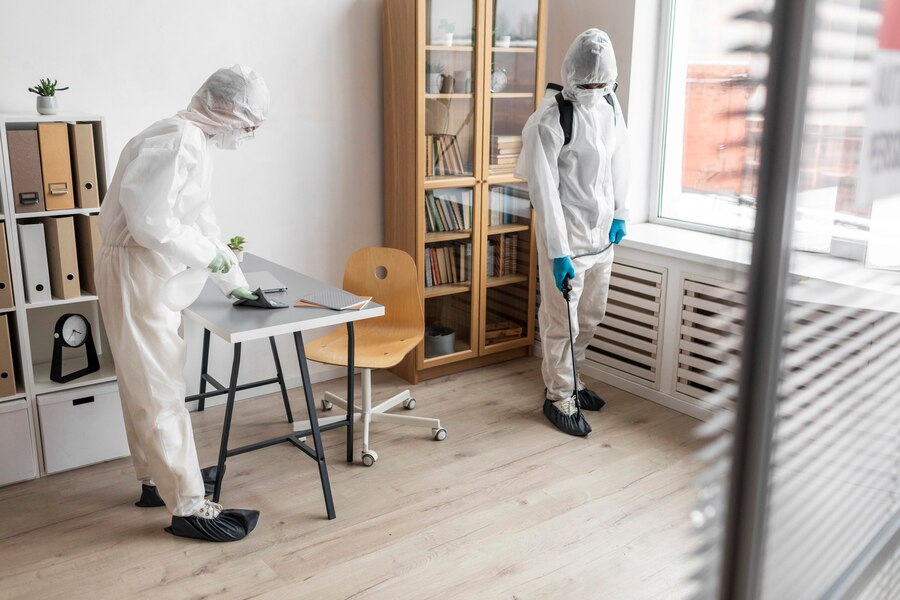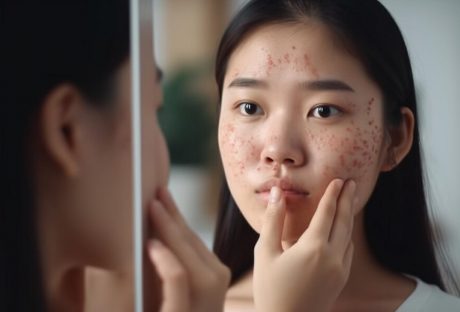In the never-ending battle against household pests, many homeowners are tempted by the allure of do-it-yourself (DIY) pest control methods. At first glance, these DIY solutions seem to offer a quick, easy, and economical way to manage pest problems. However, this surface-level appeal masks a variety of hidden dangers.
Beyond the immediate risks associated with mishandling chemicals or traps, there are significant long-term implications to consider. Ineffective pest management can lead to recurring infestations, structural damages, and even health hazards.
Professional preventive pest control is a crucial strategy for keeping our homes safe and pest-free, so if you’re considering taking matters into your own hands instead of trusting in the professionals, you must understand the risks and limitations of DIY approaches. This article will explore the ten hidden dangers of DIY pest control, highlighting why professional intervention is often safer and more practical.
Misidentification Of Pests
One of the most common and critical errors in DIY pest control is the misidentification of pest species. This mistake can lead to the application of ineffective treatments, wasting time and resources. For example, what eliminates an ant infestation might have no impact on termites.
Misidentification also means missing out on crucial knowledge about the pest’s lifecycle, behavior, and habitat, which is essential for adequate control. Moreover, using the wrong treatment can exacerbate the problem by allowing the pest population to grow unchecked, leading to a more severe infestation than was initially present.
Improper Use Of Chemicals
The dangers of improper chemical use in DIY pest control cannot be overstated. These chemicals can pose severe health risks, including respiratory problems, skin irritation, and potentially long-term health consequences if not handled correctly.
Over-application or incorrect usage can lead to environmental contamination, affecting non-target wildlife and potentially polluting water sources. The lack of professional training in handling these substances can lead to accidents that could have been avoided with expert help.
Risk Of Incomplete Eradication
DIY pest control methods often result in incomplete eradication of the pest population.
Without thorough elimination, surviving pests continue to breed, resulting in the infestation’s resurgence. Incomplete treatment fails to address the root cause of the problem, whether it be entry points, food sources, or breeding grounds, resulting in a recurring cycle of infestation and treatment. This prolongs the problem and can lead to increased pest resistance over time, making future eradication efforts more challenging.
Potential Structural Damage
Certain pests, such as termites and carpenter ants, pose a significant threat to the structural integrity of homes. DIY methods may fail to fully eradicate these pests, leading to unseen damage that can compromise the stability and safety of a building.
This oversight can result in costly repairs and long-term structural issues, far exceeding the costs of professional pest control services. The hidden nature of this damage often means it goes unnoticed until it becomes a major, costly problem.
Safety Hazards
The safety risks associated with DIY pest control are diverse and significant. Handling pesticides and other chemicals without proper knowledge or protective gear can lead to accidental exposure, posing severe health risks.
Additionally, specific pest control methods, such as foggers or heat treatments, carry risks of fire or explosions if not handled correctly. These hazards include the individual performing the treatment, other residents, and neighboring properties.
Legal And Regulatory Issues
Pesticide use is regulated by laws that DIY practitioners might unknowingly violate. Non-compliance with these regulations can lead to legal troubles, including fines and penalties.
Additionally, DIY pest control efforts can inadvertently affect neighboring properties, potentially leading to disputes or legal complications, significantly if harmful chemicals are misused or applied in a manner that violates local regulations.
Ignorance Of Integrated Pest Management
Integrated Pest Management (IPM) is a comprehensive approach to professional use that focuses on long-term prevention and minimal chemical usage. DIY methods often overlook this holistic approach, favoring immediate but short-term solutions. IPM considers the bigger ecological picture and long-term pest prevention, which DIY efforts often miss.
This ignorance can lead to repeated infestations and an overreliance on chemical treatments rather than addressing underlying causes and sustainable solutions.
Overreliance On Single Methods
DIY pest control often relies on a single method or product, which may not be effective for all types of pests or infestations. Professional pest control, however, typically involves a combination of methods tailored to the specific pest and situation.
This multifaceted approach ensures a higher success rate and more comprehensive control of the pest problem. DIY solutions, by contrast, might offer a temporary fix but fail to address the infestation in its entirety.
The Stress And Time Factor
Dealing with pests can be a stressful and time-consuming endeavor, especially when DIY methods fail to resolve the problem effectively. The emotional toll of facing a persistent pest problem and the effort and time required to apply DIY treatments can be overwhelming for homeowners.
This stress is compounded by the uncertainty of the effectiveness of these treatments and the constant vigilance required to monitor their success.
Potential For Worsening The Problem
Incorrect or inadequate DIY pest control treatments can cause pests to scatter and spread, potentially worsening the infestation. In addition, pests can develop resistance to chemicals, particularly when misused or in sub-lethal doses.
This resistance can make future control efforts more complex and less effective, leading to an ongoing battle against an increasingly resilient pest population.
Conclusion
While appealing for its perceived immediacy and cost savings, DIY pest control carries significant and multifaceted hidden dangers. From health risks to potential structural damage, legal issues, and the psychological burden of dealing with persistent pests, the complications associated with DIY methods can far outweigh their initial appeal.
When considering pest control options, weigh these risks against professional pest control services’ expertise, safety, and long-term effectiveness. In the realm of pest management, informed, cautious, and professional intervention is often the key to ensuring a safe, effective, and lasting solution.
Read Also :






















